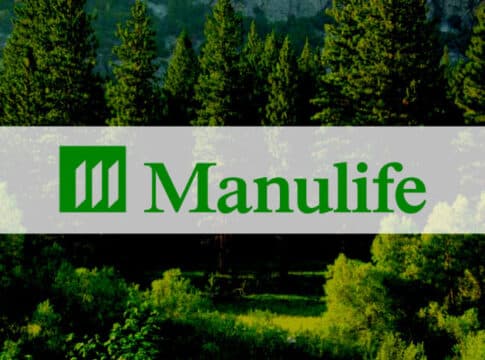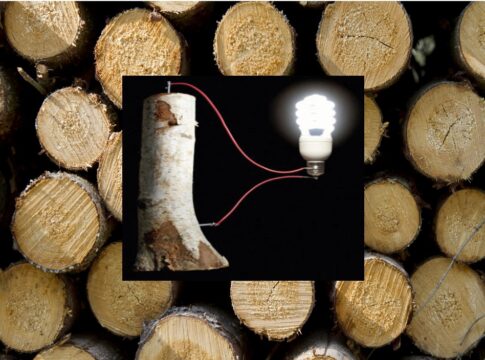Manulife Launches Forest Climate Fund to Raise $500 Million
Manulife Investment Management launched its Forest Climate Fund (FCF) which aims to raise $500 million to buy sustainably managed forests that sequester carbon.
Manulife is branching out into forest carbon credit markets. The world’s biggest timberland investment manager is raising funds to buy sustainably managed forests where capturing carbon in standing trees is more important than cutting them down for profits.
Manulife Investment manages about 6 million acres of timberland in the Americas and Oceania on behalf of investors. The firm said it will raise the $500 million fund from its parent company, Toronto insurance and financial-services firm Manulife Financial Corp., and other institutional investors.
The managing director of Manulife Investment Management’s impact investing Eric Cooperström said:
“We are excited to bring a product to investors that we have developed by capitalizing on our decades of experience in sustainable timberland management and on our carbon market expertise…”
The Manulife Forest Climate Fund
With the launch of its Forest Climate Fund, Manulife is the latest financier to use forest carbon credits in its climate strategy.
It joins the likes of Oak Hill Advisors LP, a subsidiary of T. Rowe Price Group Inc., which paid $1.8 billion for 1.7 million acres of forests to harvest carbon offsets. Last year, J.P. Morgan Asset Management also bought timberland manager Campbell Global LLC. eyeing the carbon markets.
The FCF is a closed-end fund that allows investors to promote climate change mitigation through sustainably managed forest assets.
The Fund seeks to include investors from other jurisdictions apart from the U.S. such as the EU to invest in forest carbon credits or offsets. But once offered outside the US, investors must follow the Article 9 of the EU Sustainable Finance Disclosure Regulation requirements.
Carbon credit markets have boomed as more firms pledge to reduce their unavoidable emissions via offsetting. Buyers are pressuring sellers to ensure that offsets represent actual changes in timber harvesting.
Tom Sarno, Manulife Investment global head of timberland investments, commented:
“We believe high-integrity, verified carbon credits will continue to be viewed as premier decarbonization instruments and that, in time, such carbon markets will eventually come to resemble that of more traditional commodities…”
The Manulife Forest Climate Fund will deliver durable, high-quality carbon value to investors through carbon credits. FCF will focus on forests with strong carbon potential, high conservation value, and sustainable management plans.
The fund will provide investors with high-integrity climate benefits and financial returns by using:
carbon credits,
conservation easements,
value-added strategies, and
limited timber harvests.
Manulife Sustainable Timberland Management
Manulife has a long history of timberland management that began in the 1980s. It was before known as the Hancock Timber Resource Group.
Today the company is the largest in the world, by acreage, of Timberland Investment Management Organizations. They are like private-equity firms that use raised cash to buy forestlands instead of companies.
Last year, the firm bought 89,000 acres in northern Maine to be a model for the type of properties that Manulife Forest Climate Fund will buy. It has reserved the option to sell the credits from the forests or hold them and use them toward its parent company’s efforts to slash its own footprint.
FCF investors will also have the same choice – either to receive the cash from returns or use carbon offsets.
The Fund is part of Manulife’s approach it calls “sustainability and responsible investing (SRI)”. Through it, the firm integrates environmental, social, and governance (ESG) factors through all aspects of its business.
Sustainable timberland management is under one of its five sustainability priorities: climate stability. To date, Manulife’s integrated timberland management operations comprise about 6 million acres across 6 countries and ~100 individually managed properties. The firm was able to achieve these results:
100% of its forests globally are certified sustainable
2.7 million tons of CO2 removed by its forests annually (5-year trailing average)
6.1 million carbon credits sold
Forestry Assets and The Carbon Market
The firm’s current portfolio of sustainably managed forestry assets is internationally diversified across the U.S., Canada, Australia, New Zealand, and South America.
But its forests are mostly in the U.S., which represents over 95% of improved forest management carbon credits issued and retired to date.
Forestlands have been one of the most valuable nature-based solutions to combat climate change. Climate investors find that protecting forests (REDD+) is crucial in winning the fight and so they’ve been betting on carbon credits as forestry assets.
The chart below shows the issuances and retirements of carbon credits by type (April 2022 year to date). In 2021 alone, REDD+ accounted for one of the major issuances (27%) and retirements (38%).
Source: Carbon Direct
A lot of similar efforts are in place today that generate forest carbon credits. Each credit represents one tonne of carbon sequestered by the trees.
For instance, Everland’s Forest Plan seeks to stop deforestation by 2030 by developing up to 75 forest conservation (REDD+) projects around the world. Some startups were also raising funds to develop technologies for forest management where carbon credits help fund their projects.
Manulife intends to make its Forest Climate Fund open to institutional investors globally while being subject to local ESG regulations.
The firm is pitching typical timberland fund investors. These include pensions, endowments and wealthy families, as well as companies that aim to reduce emissions via offsets.
The post Manulife Launches Forest Climate Fund to Raise $500 Million appeared first on Carbon Credits.



